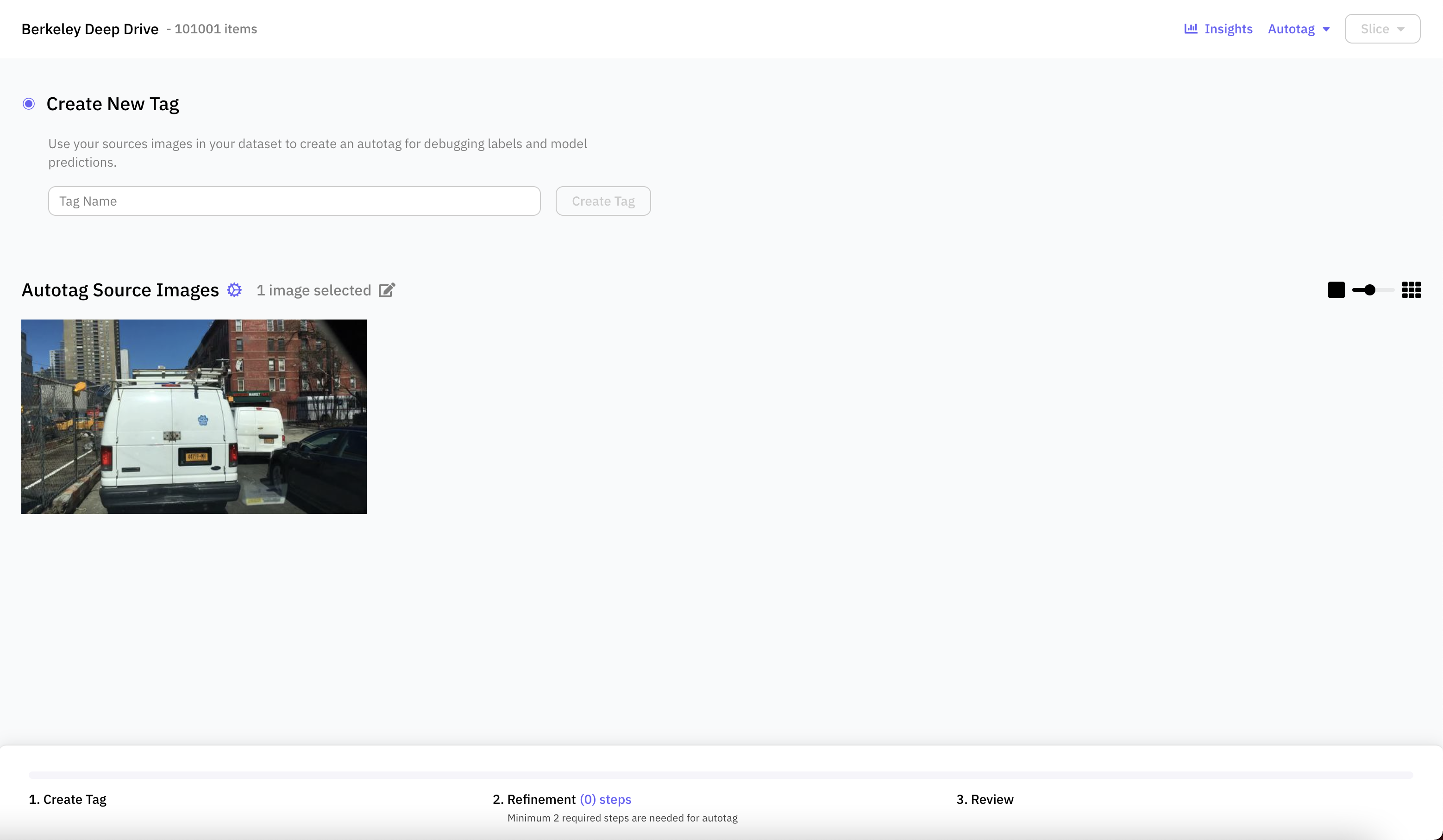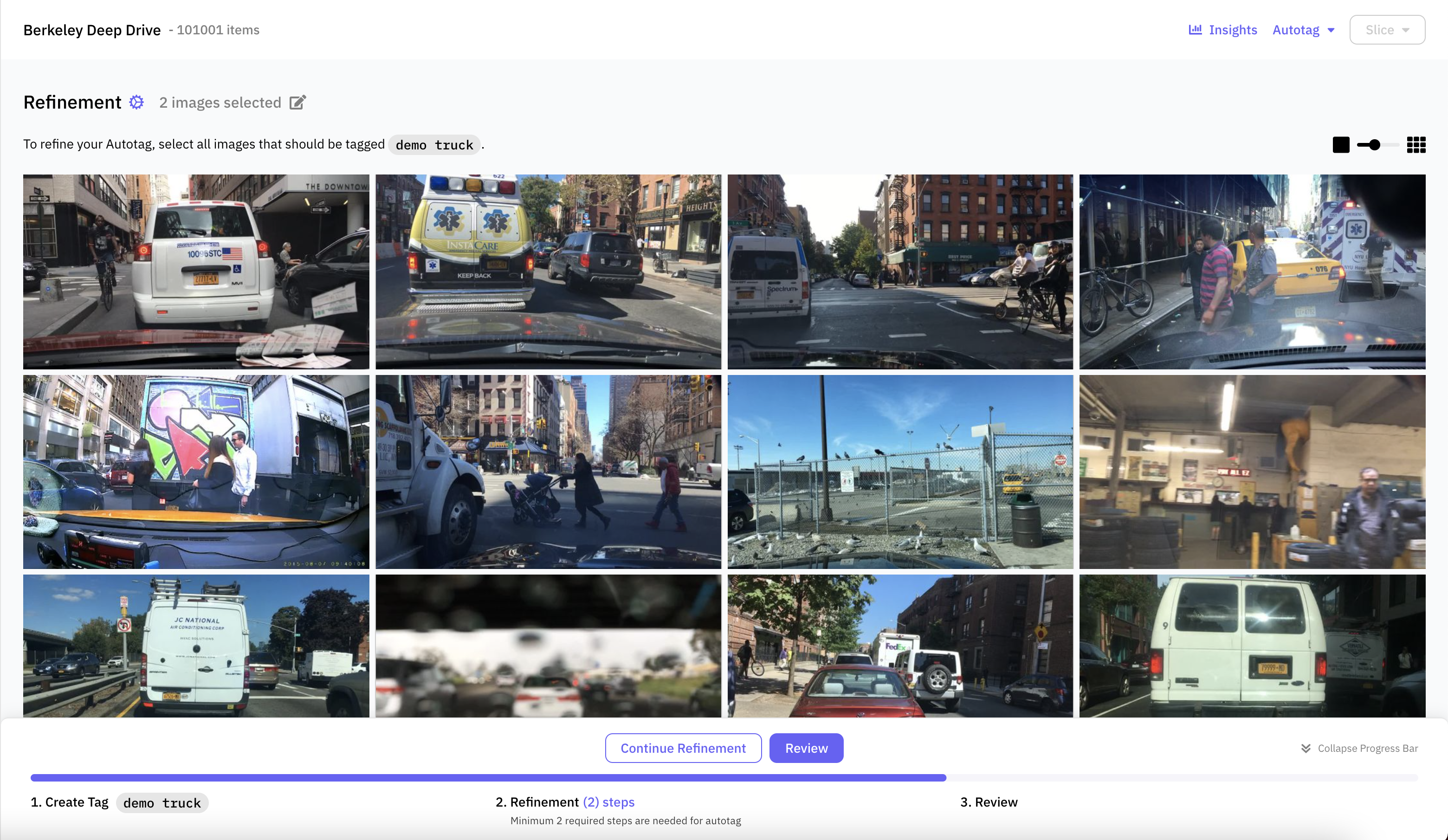Autotag Workflow
Note: Image Autotag is currently enabled by default for all datasets created after November 30, 2021. If you created your dataset before this date, you can enable the continuous indexing API endpoint on your dataset to enable image Autotag. Autotag on the object level, however, is currently only enabled for enterprise users. To create an object autotag, you must have an object index created. Reach out to [email protected] if you'd like to learn more.
Creating an Autotag
You can create an Autotag from either the default images and objects grid view, or through the similarity search result page. Creating an Autotag through the grid view is useful if you already have a few examples of what you want to search for ready on hand. In some cases, you may need more examples to effectively start an Autotag. Then, you can perform a Simple Similarity Search to find more initial examples for your Autotag.
Through the grid view
Starting Autotag is very similar to starting simple similarity search. You must first select at least one example of the image or object that you are looking for within the Nucleus grid dashboard. Then, you will see the "Autotag" option in the select drop down towards the top right:

Starting an Autotag from the grid view dashboard
Clicking on the Image Autotag dropdown will expose two options - to create an Autotag, click on the first option - Create Image Autotag.
Through similarity search
After performing similarity search, you should be able to find a few more examples to create your Autotag with in the similarity search results. Selecting these examples will also activate the same option in the select drop down, which you can use to start Autotag.
Autotag Creation Page
Once you start creating your Autotag, you will land on the following page:

Landing page for creating a new Autotag
Here, you need to supply a name to identify this Autotag. This name will be used after the Autotag is committed for querying on tagged items, for exporting items from the Autotag, and for modifying this Autotag later.
Refining an Autotag
Once you have created your autotag by clicking through Create Tag, you will be taken to the refinement page.

Autotag refinement page
Here, we return a pool of items Autotag determined was most similar to your seed items. You now have the ability to refine your Autotag and improve its search accuracy. You should select all returned items that you consider positive examples in your Autotag, and leave the rest unselected. It is crucial that you review every single returned item - if there are positive items that you did not mark, they will confuse our machine learning model in the backend, as we treat all unselected items as negative examples to train on. You can then click on Continue Refinement if you would like to continue refining your Autotag, or Review to finalize your Autotag.
In your first refinement step, it is likely to see very few relevant items returned by Autotag. However, as you select more positive examples and continue refining, subsequent refinement steps should return more and more relevant items. Once you are satisfied with the empirical accuracy of Autotag in the refinement sample, you should click into Review to start committing your Autotag.
Editing Previously Selected Items
If you click on the n images selected label next to the Refinement title, you will see a modal showing you all the items you have selected as positives for your Autotag so far:

Autotag Source Images
If you see any items that you selected in error, you can deselect them, and press on Confirm to save your changes. Once you have confirmed your user selected positives for your Autotag, you can click on Commit Autotag to commit your Autotag.
Committing an Autotag
Once you click into Review from the refinement page, you will reach the Review Autotag landing page:

Review Autotag Page
Here, you will get one last change to review the positive items you have selected for your Autotag. This is possible by clicking the n Images selected label next to the Review Autotag title to bring up the modal showing all of your selected positives for this Autotag. Once you are sure all your selected items are correct, you can commit the autotag by clicking Commit Autotag.
After a minute or two*, you will see your Autotag available in the Autotag Management page, indicating that we have finished scoring relevant items in your dataset for this Autotag. You can sort the items in your dataset based on Autotag scores in the left search bar:

Sorting Grid Items By Autotag Scores
You can also query these tagged items - check the Autotag section of the Query Language Reference for more info. You can export these tagged items via the API as well.
*This will soon be trackable in an async job.
Updated about 3 years ago